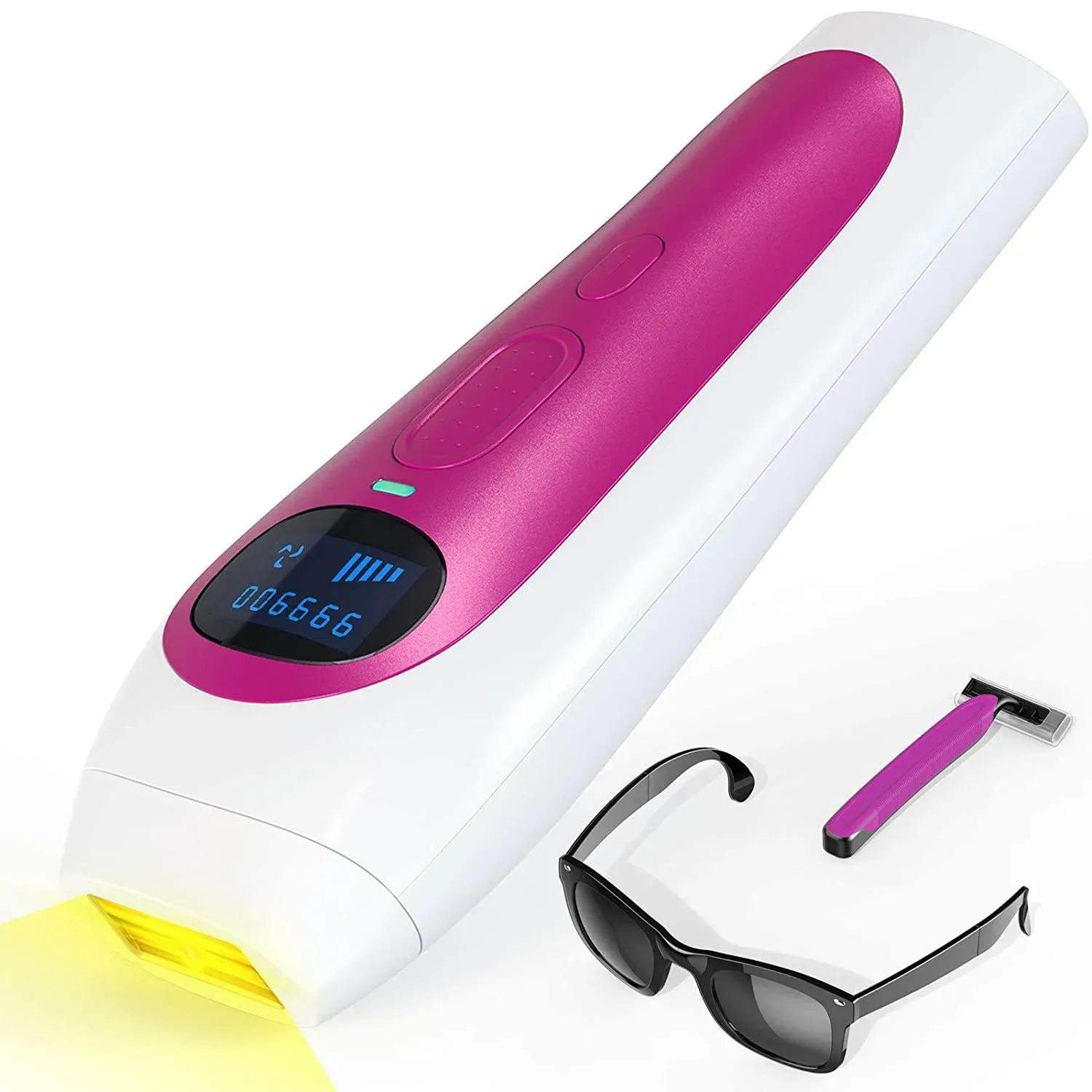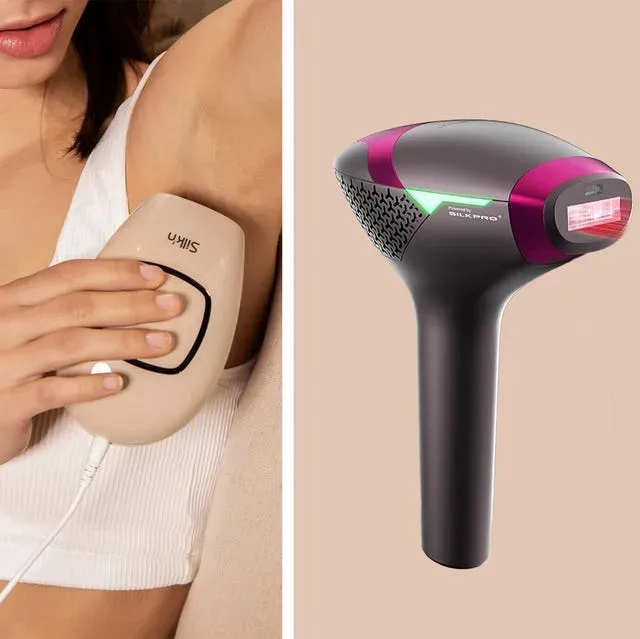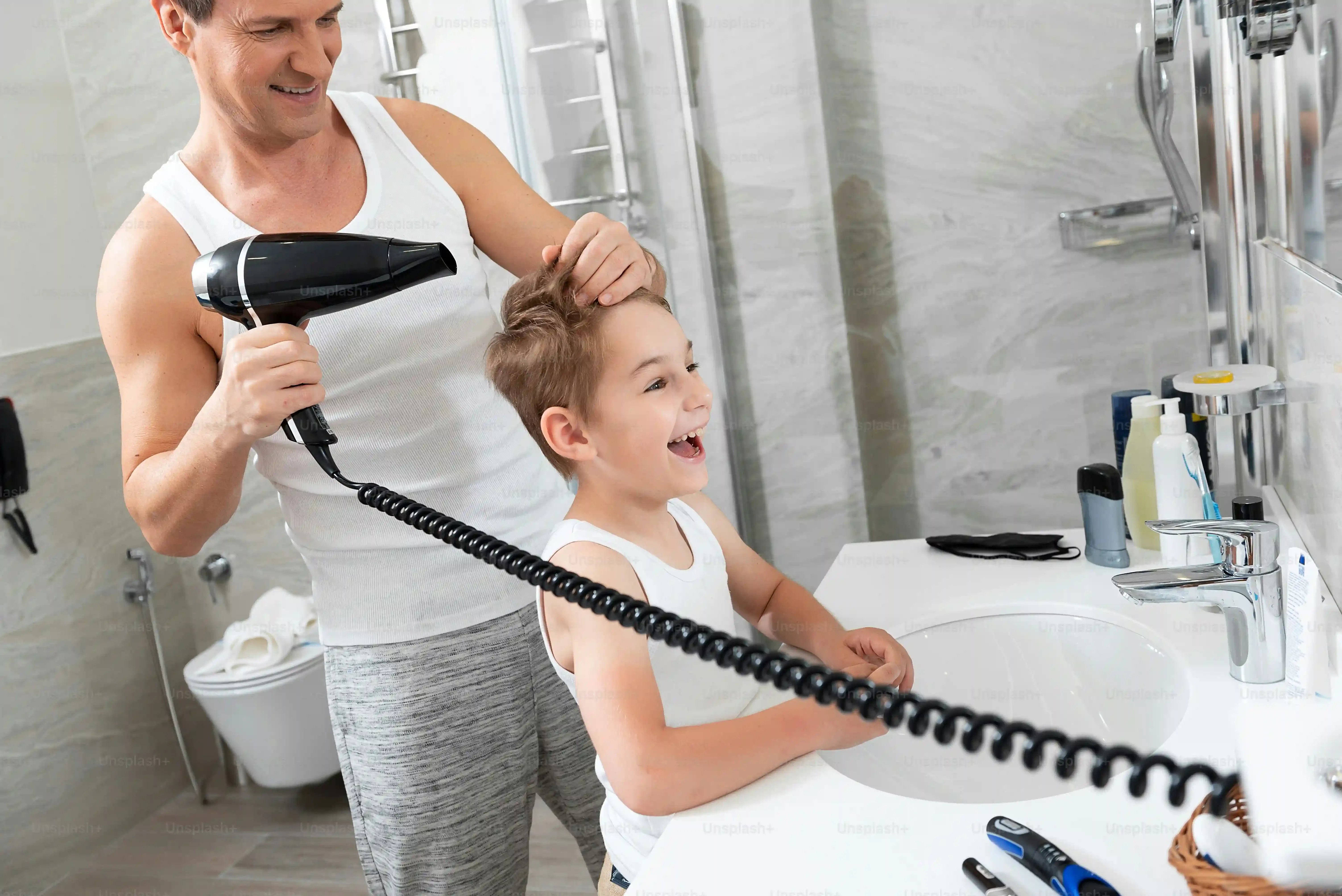Table of Contents
Tired of the endless cycle? Shaving nicks, waxing pain, epilator agony – the routine feels like a bad joke you tell yourself every few days. You look in the mirror, see that faint stubble returning already, and sigh. Maybe there's a better way, something more permanent without the clinic price tag. Enter the world of at-home hair removal devices, promising smooth skin from your couch.
Understanding Home Hair Removal: Laser vs. IPL

Understanding Home Hair Removal: Laser vs. IPL
Alright, let's get down to brass tacks because navigating the world of home hair removal devices can feel like learning a new language. When you're hunting for the best home hair laser removal solution, you're actually going to encounter two main types of tech: actual lasers and Intense Pulsed Light (IPL). While they both use light energy to target the hair follicle, they aren't the same thing. Think of a true laser as a highly focused beam, like a laser pointer, using a single wavelength specifically aimed at the pigment (melanin) in your hair. This precision means it can often be more effective, especially on darker hair and certain skin tones, but it also means the devices can be pricier and potentially more intense. IPL, on the other hand, uses a broad spectrum of light, like a camera flash, hitting multiple wavelengths at once. It still targets melanin, but it's less focused. This makes IPL devices generally more versatile across different hair colors (though still best on darker hair) and often gentler, which is why most consumer-grade home devices lean towards IPL or sometimes a lower-power diode laser.
Key Factors for Choosing the Best Home Hair Laser Removal

Key Factors for Choosing the Best Home Hair Laser Removal
so you've got a handle on the difference between laser and IPL. Now, how do you actually pick the right tool for your specific situation? Finding the best home hair laser removal device isn't just grabbing the first shiny gadget you see online. It boils down to a few critical factors that determine if the device will even work for you, let alone deliver decent results. Your skin tone and hair color are arguably the most important variables because these light-based devices target the pigment in the hair follicle. Devices work best on light skin and dark hair, as there's a clear contrast for the light energy to home in on. If you have darker skin or very light/grey hair, many devices won't be safe or effective, although newer technologies are trying to address this. Beyond that, consider the treatment area – are you zapping large areas like legs or smaller spots like the upper lip? This affects the device's head size and speed. Power levels and intensity settings matter too; more settings offer greater customization and potentially better results, but require careful use. Lastly, look at the device's lifespan (flashes per cartridge or total flashes) – you don't want it dying on you after just a few sessions.
So, what should you really be asking when you're looking at these devices?
- Is it safe for my specific skin tone and hair color?
- What areas can I treat with this device?
- How many intensity levels does it have?
- What's the expected lifespan of the device or its cartridge?
- What do actual users with similar characteristics say about their results?
Putting the Best Home Hair Laser Removal to Work: Tips and Tricks

Putting the Best Home Hair Laser Removal to Work: Tips and Tricks
Prep Your Skin: The Unsung Hero of At-Home Zapping
so you've done your homework, maybe even splurged on what looks like the best home hair laser removal device for your situation. Don't just rip it out of the box and start firing away. Proper preparation is key to not only getting results but also avoiding angry red skin or, worse, burns. First things first: clean skin is happy skin. Make sure the area you're treating is free of lotions, oils, makeup, or anything else that could interfere with the light energy or cause irritation. Shaving the area just before treatment is crucial. You want the light to target the follicle *under* the skin, not waste energy zapping hair on the surface. Plucking or waxing is a hard no – if there's no hair in the follicle, the device has nothing to target. Think of it like trying to hit a target that isn't there.
A patch test is non-negotiable. Every device manual screams about this, and for good reason. Pick a small, inconspicuous area you plan to treat, like a patch on your leg or arm. Treat it according to the instructions for your chosen intensity level and wait 24-48 hours. Look for excessive redness, blistering, or significant pain. A little pinkness is often normal, but anything more tells you that setting is too high or the device isn't suitable for you. Skipping this step is asking for trouble.
The Zapping Session: Technique and Consistency Matter
Now for the main event: using the device. Whether you've got an IPL or a diode laser, technique plays a big role in getting the most out of your best home hair laser removal efforts. Hold the device flush against the skin – most won't flash unless there's good contact. Overlapping flashes is a common mistake; you want to cover the area systematically without hitting the exact same spot multiple times in one session, which can increase the risk of irritation or burns. Some devices have glide modes for larger areas, which can speed things up, while others are designed for stamp-and-release. Follow your specific device's instructions religiously.
Consistency is arguably the most important factor. These devices require multiple treatments over several weeks or months because hair grows in cycles, and you can only effectively target follicles in a specific growth phase. Missing sessions means you're missing cycles, and your progress will stall. Stick to the recommended treatment schedule, usually every 1-2 weeks initially, then tapering off. After treatment, avoid sun exposure on the treated area and use a high SPF sunscreen if you can't avoid the sun. Soothing gels like aloe vera can help if you feel any heat or mild discomfort. Don't expect miracles overnight; it's a marathon, not a sprint.
Preparation Step | Why It Matters |
|---|---|
Clean Skin | Prevents interference and irritation. |
Shave (Don't Wax/Pluck) | Ensures light targets the follicle, not surface hair. |
Patch Test | Checks skin reaction and determines safe intensity. |
Managing Expectations: What Results Look Like with Home Devices

Managing Expectations: What Results Look Like with Home Devices
Patience, Padawan: It's Not an Instant Off Switch
let's talk brass tacks about what happens after you've diligently prepped and zapped. If you're picturing perfectly smooth, hairless legs after just one or two sessions with your shiny new device, you're setting yourself up for disappointment. These aren't magic wands. The light energy weakens the hair follicle, yes, but it doesn't vaporize it on contact like you might see in sci-fi movies. Hair grows in cycles, and you're only effectively treating the follicles that are actively growing at the time of your session. That means you *will* see hair regrowth between treatments. It might be patchier, finer, or slower, but it will show up. The goal isn't immediate baldness; it's a gradual reduction in hair growth density and thickness over time. Anyone selling you "permanent hair removal" with a home device is likely stretching the truth further than a yoga instructor on a caffeine binge. Think long-term reduction, not total eradication.
The Slow Burn: Seeing Real Change Takes Time
So, when do you actually start seeing noticeable results from your efforts with the best home hair laser removal setup you could find? Generally, it takes several weeks, often two to three months of consistent treatment, to see a significant reduction in hair growth. You might notice patches where hair isn't growing back as quickly, or the hairs that do appear are thinner and lighter. This isn't a one-and-done deal; most treatment protocols involve sessions every 1-2 weeks for the initial phase, then maintenance sessions every month or two, or even less frequently, depending on your individual regrowth. Skipping treatments slows everything down. It requires commitment, like trying to learn a new language or finally clearing out that junk drawer. The payoff is fewer ingrown hairs, less frequent shaving, and smoother skin for longer periods.
- Initial results often visible after 2-3 months.
- Requires consistent treatment, typically weekly or bi-weekly at first.
- Maintenance sessions are necessary to keep results.
- Expect reduction in hair, not necessarily 100% removal.
- Results vary based on device, skin/hair type, and consistency.
Navigating the Options: Finding Your Best Home Hair Laser Removal

Navigating the Options: Finding Your Best Home Hair Laser Removal
Cutting Through the Noise: Where to Start Your Search
so you've grasped the basics and you're ready to actually look at devices. The sheer volume of options claiming to be the "best home hair laser removal" can make your head spin faster than a centrifuge. You see sleek designs, celebrity endorsements, and price tags that range from "maybe I'll skip coffee for a week" to "I could buy a used car." It's easy to get lost in the marketing hype. Forget the pretty pictures for a second. Your first filter should always be compatibility. Does the device use technology (IPL or laser type) that is safe and effective for your specific skin tone and hair color combination? Most reputable brands have charts or online tools for this. If a device claims it works on *everyone*, red flag it immediately. Physics still applies, even in the world of beauty gadgets.
Feature Checklist: What Really Matters in a Device
Once you've narrowed down the field to devices that are actually suitable for you, it's time to compare features that impact usability and results. Consider the treatment window size. A larger window covers more area faster, great for legs or the back. A smaller, precision head is essential for fiddly spots like the upper lip or bikini line. Some devices offer interchangeable heads, giving you the best of both worlds. Flash speed matters too; nobody wants to spend an hour zapping one leg. Look at the number of intensity levels. More levels allow you to gradually increase treatment strength as you get comfortable and your hair thins, potentially leading to better results. Finally, battery vs. corded operation is a personal preference, but battery life and recharge time are crucial if you go cordless.
- Skin Tone & Hair Color Compatibility (Non-Negotiable!)
- Treatment Window Size (Big for body, small for face/bikini)
- Flash Speed (How quickly can you treat an area?)
- Intensity Levels (More control, potentially better results)
- Device Lifespan (Total flashes available)
- Corded vs. Cordless Operation
Making Your Choice for Long-Term Smoothness
So, finding the best home hair laser removal isn't about picking the flashiest gadget. It's about matching the technology to your specific situation – your skin tone, hair color, and willingness to commit to a routine. These devices aren't one-and-done magic wands; they require patience and consistent effort. You won't see perfectly bare legs overnight, and maintenance sessions will likely become part of your life. But for those tired of the daily grind of traditional methods, the potential for significantly reduced hair growth is a tangible benefit worth considering. Do your homework, manage your expectations, and maybe, just maybe, you can finally break free from the razor.
